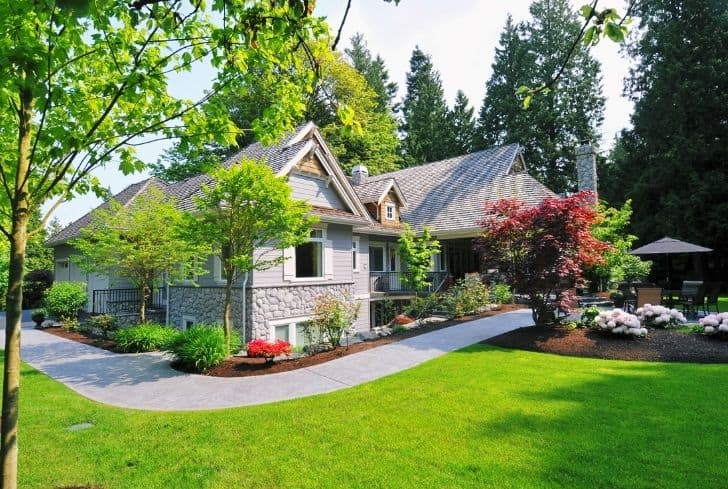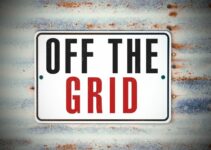In the present day and age, people are looking to find ways that they can be more energy efficient. The truth is, people want to do anything and everything they can to conserve energy because it is not only better for the environment, but it also helps them to save some money in the long run.
Energy-efficient homes conserve energy, reduce unnecessary energy consumption, greenhouse gas emissions and demand for non-renewable resources. They provide significant savings over conventional homes.
Energy efficiency is not just for certain people; it is something that everyone can take part in. The good news is that there are a few ways that you can make your home energy efficient with energy-efficient strategies and products without having to spend too much money out of pocket. Then, you can just enjoy the cost savings throughout the year and also get a few tax breaks while you are at it. Here are a few things that you should try.
17 Super Easy Ways to Create Energy Efficient Homes
1. Improve the Insulation in Your Home
First and foremost, you will want to make sure that you improve the insulation in your home. During the cold winter months, you could be letting out a lot of your heat if you don’t have good insulation. This could be costing you, and it could also be detrimental to the environment.
The key is to make sure that you have proper insulation, weather stripping and other insulating techniques throughout your home. Caulk or foam air leaks around windows, doors, floors and ceilings and also your attic, walls, and basement or crawl space. You can even do this yourself or have an expert come in and handle it for you.
2. Consider Replacing Your Windows
Your windows can also cause you to lose a lot of heat during the winter months and cool air during the summer months. This can really be detrimental when it comes to your energy costs over the year. Some of the older types of windows aren’t as energy efficient as you would like for them to be.
Double panel windows and other vinyl frames are much better than single-pane windows and aluminum frames. You may also consider tinting your windows and keeping your blinds open to let some light in that won’t cost you a dime. If you have trouble, you could always hire a Dallas Window Installation or another window installation expert.
3. Use Compact Fluorescent Bulbs (CFLs)
If you have the older type of light bulbs in your home, then you may find that you are using much more energy than you have to as well. This is why so many people are switching to fluorescent bulbs. They may be a bit more upfront, but over time you end up saving money.
They can last up to 12 times longer than a regular incandescent bulb will. You can even mix them up a bit and use some of the fluorescent bulbs and some incandescent bulbs, and it will still have a dramatic difference in your overall usage of energy.
4. Look for Energy Efficient Appliances
If you are shopping for new appliances to help make your home more energy-efficient, look for appliances that have the HE logo. Energy-star certified appliances use less energy, and while they may cost you a bit more in the beginning, it is much more of an investment for you. This is because it will save you money over time when it comes to running your appliances.
5. Don’t Overuse Appliances
Even with energy-efficient appliances, you still don’t want to overuse them. Don’t use your heater too much during the winter months, unless you must. Also, try to keep your thermostats at a comfortable setting rather than changing them up all the time.
If you change them up too much, it uses far more energy than you should. You should also consider turning certain things off when they are not in use because, believe it or not, they use energy even if they aren’t powered on- just if they are plugged into the wall.
6. Consider Solar Panels
If you can afford it, solar panels may be a great investment. You can have them installed on your rooftop, and believe it or not, they can actually help to cut down on your electricity costs because it helps you to be able to produce your own electricity.
This really is something to consider, especially when you think about the fact that they are so cost-effective. It isn’t for everyone, but as we get further into the green movement, you will begin to see many more people that opt to have solar panels installed in their homes.
7. Schedule Energy Efficiency Audit
Give a call to energy auditors to check as to where your home currently stands in terms of energy efficiency. These auditors are equipped with specialized tools and skills that can help them to evaluate the energy efficiency of your home and determine where efficiency can be improved by recommending some low-cost measures. This will help you to figure out which parts of your home need your immediate attention.
8. Plant Shady Landscaping
Great landscaping outside your home can help you to protect your home from intense sun during summer days and chilly winds during the winter season. The tree and its leaves will protect your house from sun’s rays during hotter days and make it cool to live inside comfortably. If you have been using high energy-efficient appliances and good insulation in your home, the effect will be much smaller as your home is already blocking all the heat.
9. Install Programmable Thermostat
A programmable thermostat is another efficient way to cut down energy usage in your home. When you’re away, set the thermostat to a higher temperature or lower in cooler months. A programmable thermostat doesn’t cost much, and the money saved by reducing energy usage can be used to pay for it in a few months.
10. Switch off Gadgets when not in use
An idle printer, desktop computer, microwave ovens and coffee makers equipped with LED clocks running all night when not in use consume power. Switch them off when you don’t need them immediately. Even try to switch off your refrigerator when you are planning to go away from home for a long time.
These small savings will eventually turn to big savings once you calculate the amount of energy saved by the end of year. Also, unplug battery chargers when they aren’t in use. Chargers for cell phones, laptops, and other wireless devices use lots of energy even when they aren’t charging their devices.
11. Set Water Heater to Warm Setting
You can cut electricity bills by making a few of these adjustments. Firstly, set the temperature of your water heater to warm setting (approx. 120°F – 130°F). You don’t need water hotter than it to wash your clothes and dishes. Secondly, use low-flow fixtures for showers and baths and, thirdly, insulate your hot water pipes so they don’t cool off quickly.
12. Tune-Up Your HVAC System
Tune-up on your heating and cooling system annually to ensure that your furnace and A/C are running at peak efficiency, which will save you money every month. A home heating and cooling check-up improve efficiency by ensuring connections are tightened, parts are properly lubricated, and coils are cleaned. Tuning up your HVAC system can also help you avoid replacing your furnace, which can cost pretty much amount.
13. Cook smart
An enormous amount of energy is wasted while cooking. Certain statistics illustrate less wasteful ways of cooking like convection ovens are more efficient than conventional ovens.
They use fans to force hot air to circulate more evenly, thereby allowing food to be cooked at a lower temperature consuming approximately 80% less energy and at the same time, convection ovens use approximately 20% less electricity than conventional ovens. Pressure cookers reduce cooking time dramatically. Using lids on pots and pans will heat food more quickly than cooking in uncovered pots and pans.
14. Change the way you do laundry
Wait until you have a full load of clothes rather than using the medium setting on your washer. The medium setting saves less than half of the water and energy used for a full load. Avoid using high-temperature settings when clothes are not very soiled.
Clean the lint trap every time before you use the dryer. Not only is excess lint a fire hazard, but it will prolong the amount of time required for your clothes to dry. Spin-dry or wring clothes out before putting them into a dryer. If possible, air-dry your clothes on lines and racks.
15. Install a tankless water heater
Tankless or demand water heaters heat water directly without the use of a storage tank and provide hot water only as it is needed. They don’t produce the standby energy losses associated with traditional storage water heaters, which will save on energy costs.
When a hot water tap is turned on, cold water travels through a pipe into the unit. A gas burner or an electric element heats the water. As a result, tankless water heaters deliver a constant supply of hot water. You don’t need to wait for a storage tank to fill up with enough hot water.
16. Reduce the amount of hot water you use
Water heating is a major part of your total energy consumption and cost. You can take short showers instead of baths; you can use water timers or water, reducing shower head. Lower the thermostat on your water heater. Insulating your water heater with a water heater blanket and wrapping your pipes will keep the water hotter longer and save you money. Wash your clothes in cold water for longevity.
17. Find better ways to heat and cool your house
The energy bills can be reduced through some adjustments to the heating and cooling systems. Install a ceiling fan. Ceiling fans can be used in place of air conditioners, which require a large amount of energy. Periodically replace air filters in air conditioners and heaters. Set thermostats to an appropriate temperature.
Install a programmable thermostat. Install a wood stove or a pellet stove. These are more efficient sources of heat than furnaces. At night, curtains drawn over windows will better insulate the room. You can even consider blinds if blinds are more suitable than curtains in your home.
As you can see, creating energy-efficient homes isn’t all that difficult. There are simple steps that you can take, and you don’t have to do it all at once. It may be just a good idea for you to make a few changes every now and then to work towards it so that you don’t overwhelm yourself.







